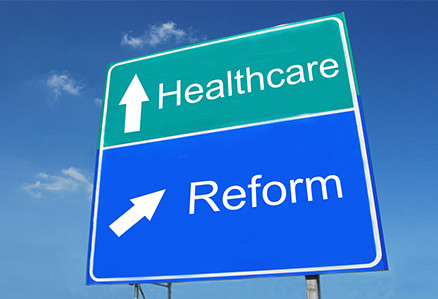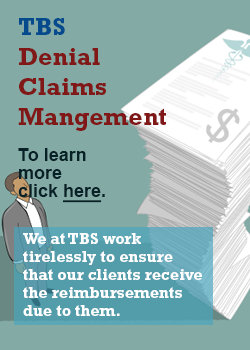February 19, 2016
Physician Practice Pattern Change Management to Achieve the Overarching Goals for Patients through the NY DSRIP Program

1. The Fundamental Need for Physician Practice Pattern Modification in the Transition from Volume to Value Based Reimbursement in the NY DSRIP Program
One of the key goals of the NY Delivery System Reform Incentive Payment (DSRIP) program is to facilitate the transition to a healthcare financing system for the treatment of Medicaid patients in NY State that is at least 90% value-based by the year 2020. For this to occur, physicians (who still directly or indirectly control about 80% of healthcare expenditures) must fundamentally change their practice patterns which, for decades have stressed volume (and high expense) over demonstrable value. As critically important as these changes in physicians’ practice patterns are to the success of making this transition from volume to value based care, there are many challenges that need to be addressed and overcome. These are covered in detail in the section appearing immediately below.
2. Challenges to Address and Overcome in Changing Physician Practice Patterns to Facilitate the Transition from Volume to Value Based Reimbursement
a) Most of the Healthcare Financing System is Still Volume-Driven Fee for Service
The substantial majority of most physicians’ (and other providers’) compensation is still volume-driven based. The Physician Quality Reporting System (PQRS) and its Value Based Payment Modifier feature, the Meaningful Use of electronic health records incentives and penalties, and electronic prescribing programs, only impact most physicians’ compensation by a few percent. These efforts at value-based purchasing have not provided enough incentive to get most physicians to change their practice pattern behavior significantly for many reasons covered further below.
Over the next few years, as the PQRS and Meaningful Use are subsumed by the Merit-Based Incentive Payment System (or MIPS), this (in combination with all the other private and public sector value based purchasing initiatives) might begin to provide sufficient financial incentives for most physicians to change their practice patterns. But MIPS will not become a serious factor until 2019 and beyond. In the meantime, there need to be other substantial financial (as well as non-financial) incentive systems to motivate physicians(and other providers) towards value based care delivery.
Unique to the NY DSRIP program are substantial resources for PPSs to incent physicians’ and other providers’ transition from volume to value based care delivery. PPSs must provide sufficient financial and non-financial incentives to reward participating physicians and other providers based on their demonstrable ability to contribute measurably to each PPS’s meeting its project-based goals.
b) Physicians Have been Trained that “More Care is Better Care” & Medical Liability Implications
From their earliest days of medical school, most physicians learned that “more care is better care”. Much of that has to do with the environment in which the vast majority of physicians have been (and continue to be) taught, i.e. in academic medical centers (as opposed to community-based settings). The ready access to specialists, sub-specialists, and expensive technologies (which need to be utilized often to justify their cost) provides strong incentives to support the “more care is better care” ethos. In fact, to not utilize these readily accessible miracles of modern technology (and the specialists and sub-specialists who have trained for years and decades to use them) may label such physicians as “not team players”, or even as “intellectually lazy”. So even when there may be sufficient financial incentives for physicians and other providers to change from a volume to a value-based care delivery mindset, decades-long practice patterns, ingrained since their initial training, may prove very hard to break.
The specter of medical liability is also ever present to prod physicians (and other providers) to opt to do something (anything) even when the medical (and perhaps even financial) case for doing so is not compelling. It is still the strong perception of many physicians and other providers that doing more “to” patients (as opposed to “for” them) is the best way to protect against litigation. Part of the process of incenting physicians to change their “more care is better care” mindset must also provide credible assurances to them that they will not be risking greater medical liability exposure by changing.
c) Physicians and other Providers Don’t Have Sufficient & Readily Accessible Credible Resources to Guide Changes in their Practice Patterns to Facilitate Superior Value Care Delivery
For decades, there have been efforts by both public and private sector payers to standardize physician practice patterns to improve efficiency, cost effectiveness and predictability. Despite these efforts, there are still broad variations in physician practice patterns in the treatment of many, if not most, chronic medical conditions. Some of this resistance to change may be traced to the reasons provided in the two sections appearing immediately above. Even when physicians themselves create what are purported to be best evidence based practice guidelines, adherence to them is often less than optimal. This may be a result of insufficient financial and professional incentives to change, the fear of medical liability and/or deeply ingrained habits. It may also be due to the bias against taking a “cookie cutter” approach to medical care. Physicians claim (with good reason) that every patient is different based on his or her unique medical and social/behavioral histories, condition severities and personal preferences.
Physicians will not change their deeply ingrained practice patterns unless they are convinced of the unimpeachable credibility of the message and the messenger convincing them to do so. That is why most computerized physician order entry (CPOE) and clinical decision support systems have not enjoyed nearly the success their designers had envisioned. A lot of this has been the fault of these systems’ rather clunky and often cumbersome, error-prone designs. However, there often has not been sufficient education of physicians and other providers about much more sophisticated, cloud-based decision support systems. These are able to account for millions of unique patient condition data points in real time to facilitate best evidence based practices that are superior to what even the best physicians could identify in the absence of such technological assistance. Of course, any best evidence based decision support system must be populated with complete real time data about patients from providers, past and present, and overcome the other barriers to effective physician practice pattern modification referenced above.
Receive a full written presentation on the
TBS Practice Pattern Change Management Program HERE!
For Physician Practices, Physician Groups and ACO’s.
Subscribe
0 Comments
 TRANSNATIONAL
TRANSNATIONAL 917.257.4492
917.257.4492








